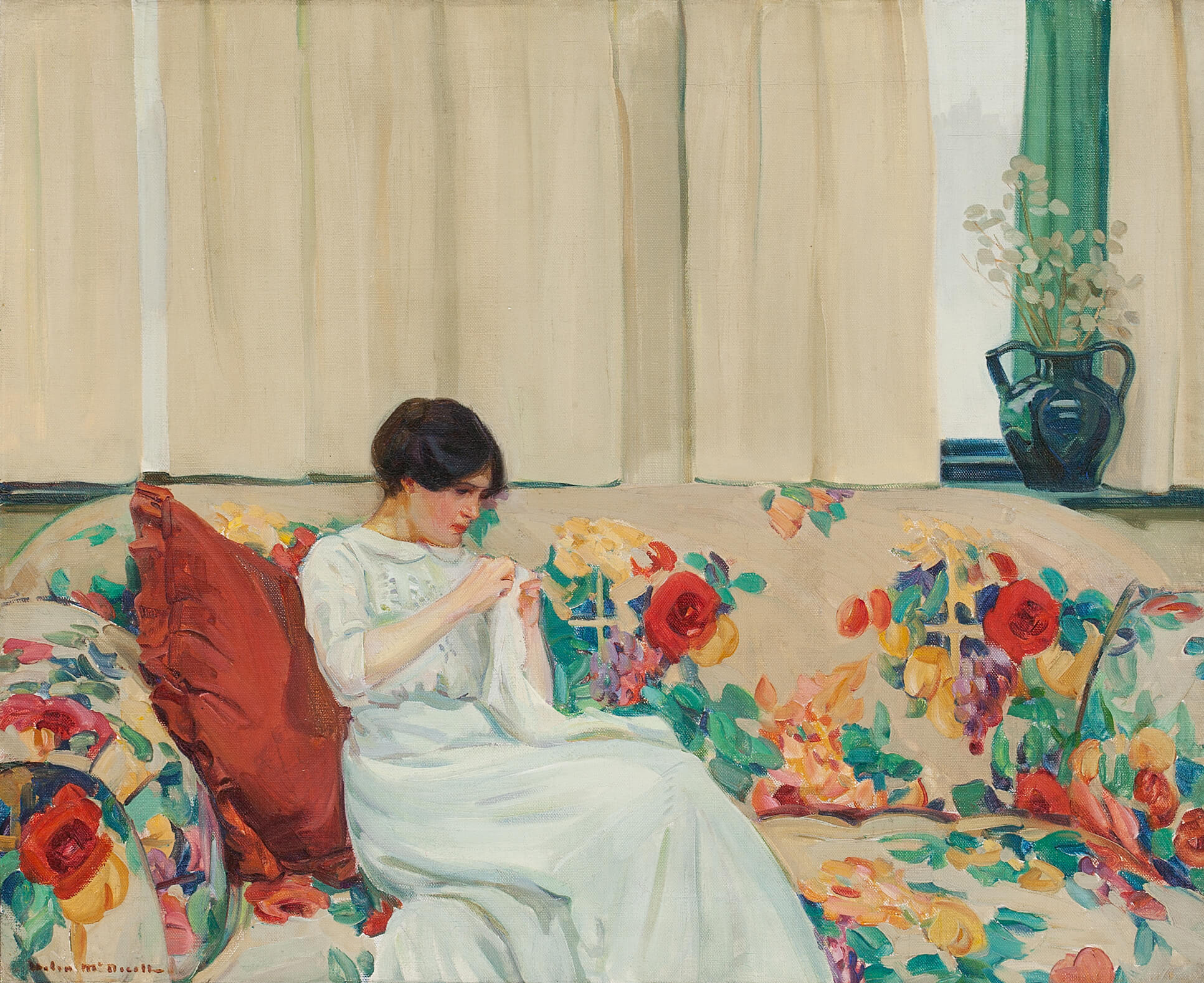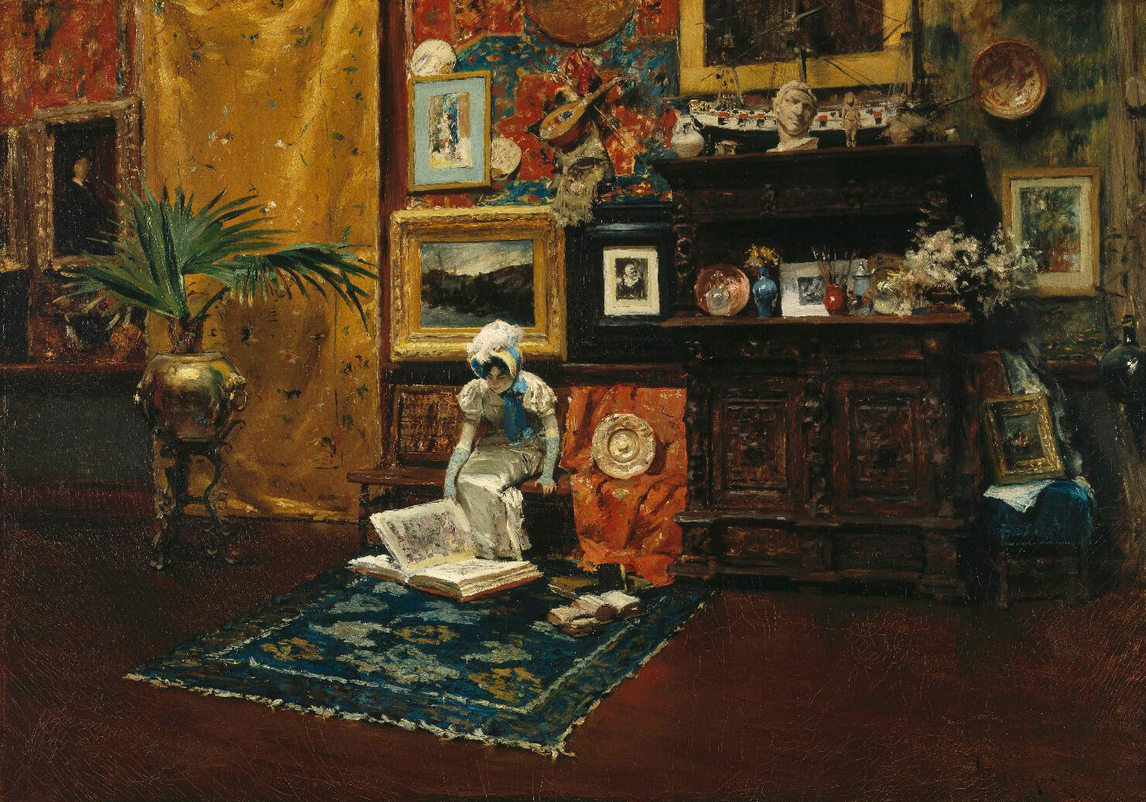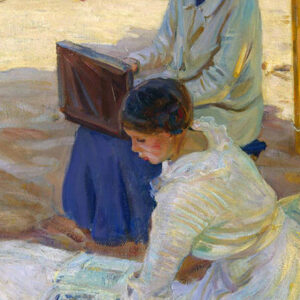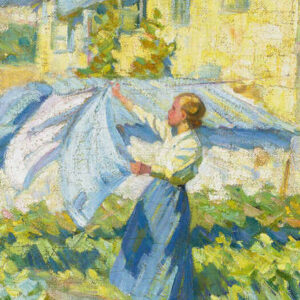The Chintz Sofa c. 1913

Helen McNicoll, The Chintz Sofa, c. 1913
Oil on canvas, 81.3 x 99.1 cm
Private collection, Thornhill, Ontario
The Chintz Sofa depicts the London studio McNicoll shared with her partner, British artist Dorothea Sharp (1874–1955), who poses in the painting. Although the image appears at first glance to show a scene of quiet, feminine domesticity, Natalie Luckyj suggests that the figure in The Chintz Sofa could be seen as a suffragette working on a piece of memorabilia for the women’s rights movement. In 1913, the suffrage campaign was at the height of its militant phase. Press reports on the violent protests and civil disobedience following the dismissal of the Reform Bill would have run alongside news of McNicoll’s election to the Royal Society of British Artists (RBA).
In the art world, too, women fought for equal access. Even when elected to established societies like the RBA, women remained in a tenuous position and sometimes opted to join or form alternative exhibiting societies like the Society of Women Artists (SWA). The SWA was established in 1856 with the explicit goal of enabling women’s access to the male-dominated art world, and Sharp was the association’s vice-president when she modelled for her partner’s canvas. Although there is no firm evidence of McNicoll’s or Sharp’s political beliefs, it is appealing, in light of their active participation in women’s organizations, to view The Chintz Sofa as an engagement with a wider world of feminist interventions rather than as a depiction of a woman quietly embroidering in the parlour.

The artist’s studio was a fashionable subject in American Impressionism—in works by William Merritt Chase (1849–1916), for example. The studio also provides the setting for at least three other McNicoll works—a second painting called The Chintz Sofa #2, c. 1913, and two canvases completed around 1914, both entitled The Victorian Dress. McNicoll and Sharp’s studio was located at 91 Ashworth Mansions, in the posh Maida Vale neighbourhood of London. From of a photograph of Sharp wearing a painting smock (presumably taken by McNicoll), we know that the studio was a large space.
At the turn of the century, the studio was not limited to artistic production but doubled as a site for exhibitions and networking. Writing to her father, McNicoll describes holding a show at the studio a week before the annual elections of the RBA in 1913. She notes that fifty-seven people attended, including many members of the society, and that Sharp used the space to network on her behalf. These efforts were successful, and McNicoll was elected to membership. On that occasion, a photograph of the studio accompanied an article about the artist and her accomplishment in the Montreal Daily Star.

 About the Author
About the Author
 More Online Art Books
More Online Art Books
 Acknowledgements
Acknowledgements